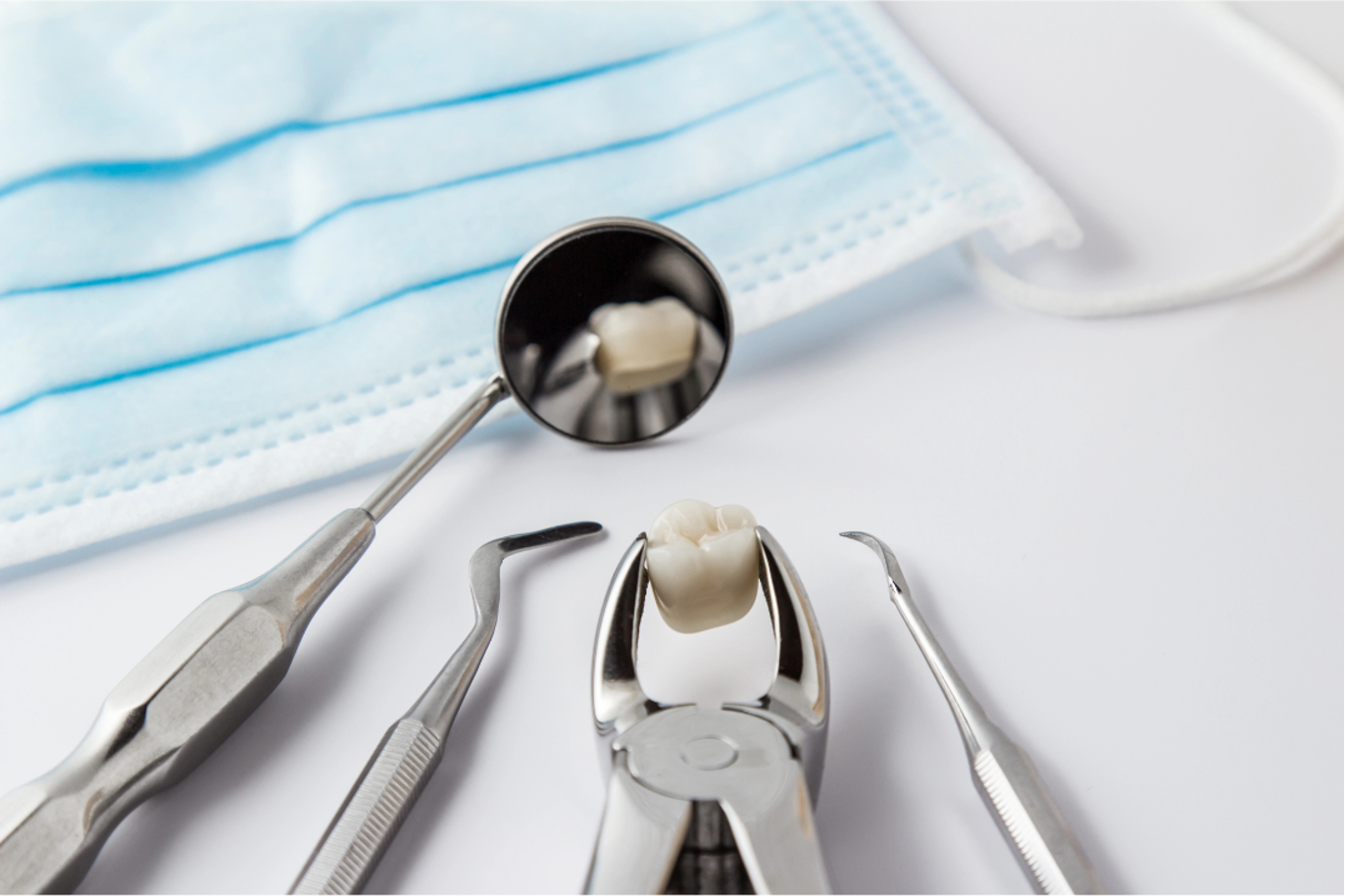When a tooth problem is serious and can no longer wait, you are facing a dental emergency. Emergency dental care helps alleviate immediate suffering and prevent the rapid progression of infection or the permanent loss of surrounding dental structures. Ignoring critical warning signs can lead to excruciating pain, widespread infection, and complications that jeopardize your overall health.
Certain urgent symptoms may indicate the need for an emergency tooth extraction, a procedure that is often the safest and fastest route back to health and comfort.
Read on to learn more about the critical signs of distress, the risks of delay, and what you can expect during the process.
If you suspect you have a dental emergency, you must seek a dentist’s professional evaluation immediately.
What Exactly Is an Emergency Tooth Extraction?
An emergency tooth extraction is the urgent removal of a tooth necessitated by a sudden, critical event: typically overwhelming pain, severe trauma, or acute, spreading infection.
It differs from a planned extraction, such as removing asymptomatic wisdom teeth or extracting teeth for orthodontic purposes. Planned extractions are scheduled well in advance and usually involve extensive pre-surgical planning.
In contrast, an emergency extraction is performed when a tooth is deemed non-restorable, presents an immediate health risk, or is the direct source of unmanageable pain.
The core dilemma in emergency dentistry is always whether the tooth can be salvaged. Dentists weigh two critical factors:
- Restorability: Can the tooth be saved with procedures like a root canal, deep filling, or crown?
- Risk: Does keeping the tooth pose a greater threat to the patient’s health than removing it?
When the damage is too extensive, the infection is too widespread, or the pain is intractable, extraction becomes the necessary and safest course of action.
4 Common Signs You May Need an Emergency Extraction
1. Severe or Persistent Pain
Dental pain is the body’s alarm system, and if that alarm is shrieking without stopping, it’s a sign that the nerve is likely infected, dying, or severely irritated.
● Pain Unresponsive to Relief: If over-the-counter pain relievers fail to provide significant or lasting relief, this suggests a deeper, more severe pathology, likely an irreversible inflammation of the tooth’s pulp.
● Pain Disrupting Sleep or Daily Activities: Acute, throbbing pain that keeps you awake at night or prevents you from working, eating, or concentrating is a clear sign that the issue has progressed beyond simple sensitivity or a small cavity. This intensity often indicates an advanced infection that has reached the soft inner tissue of the tooth.
● Pain on Release: Pain that worsens when you release biting pressure can sometimes indicate a fracture or cracked tooth syndrome, demanding rapid diagnosis to prevent the crack from spreading further into the root structure.
2. Dental Abscess or Spreading Infection
A dental infection is one of the most common reasons for an emergency extraction. An abscess occurs when bacteria enter the tooth’s nerve chamber and spread down the root tip into the surrounding bone and gum tissue.
● Visible Swelling: Swelling that appears suddenly in the gums, jaw, or face is a major red flag. Facial swelling suggests the infection has breached the confines of the tooth and is now spreading into the soft tissues.
● Pus, Foul Taste, or Drainage: The presence of a small, pimple-like bump on the gum line that drains pus, or a persistent foul taste in your mouth, indicates an active, ongoing bacterial infection.
● Systemic Symptoms (Fever, Malaise): If the infection is severe enough to cause a fever, chills, fatigue, or general malaise, it signals that the infection is entering the systemic circulation. This is a potentially life-threatening emergency known as cellulitis or sepsis and requires immediate medical and dental intervention.
3. Broken or Fractured Tooth Beyond Repair
Accidents, biting down on a hard object, or severe decay can lead to sudden structural damage to a tooth.
● Tooth Shattered or Severely Split: A clean break where a large piece of the enamel or cusp breaks off may often be restored with a crown or filling. If the tooth is shattered below the gum line or has a vertical fracture that extends deep into the root, the tooth is often unsalvageable.
● Risk of Further Damage: A severely damaged tooth poses a high and immediate risk of exposing the pulp to bacteria, triggering a rapid infection, or cutting the tongue or cheek tissue due to its sharp edges. Extraction in this scenario prevents further irreversible trauma.
4. Advanced Decay, Impacted Wisdom, and Trauma
Three other situations frequently lead to emergency extractions:
● Advanced Decay: Years of neglect or rapid decay can consume so much of the tooth structure that there is not enough healthy dentin left to support a filling or a crown. When the tooth is structurally unsound and mostly hollowed out, extraction becomes the only safe alternative to prevent chronic infection.
● Impacted Wisdom Teeth: While wisdom tooth extractions are often planned, they can become emergencies when they suddenly cause intense pain, swelling, or infection of the surrounding gum flap.
● Trauma-Related Injuries: Following a sports injury, fall, or accident, a tooth may become severely loosened or knocked out but still partially attached. If the ligaments holding the tooth have been extensively damaged and the root fractured, the tooth may be deemed unsalvageable and require immediate extraction.
Risks of Delaying an Emergency Extraction
Spread of Infection
The localized infection in the tooth and jawbone can quickly spread to adjacent structures. This can involve the floor of the mouth, the sinus cavities, the eye socket, and in rare but severe cases, the brain (Cavernous Sinus Thrombosis).
Worsening Swelling and Airway Risk
Swelling caused by infection in the lower jaw can track downward, potentially compressing the airway. This difficulty in breathing or swallowing requires immediate hospital intervention.
Risk of Permanent Damage
Delaying the removal of an infected tooth can cause extensive, permanent loss of the surrounding bone structure, complicating future restorative options like dental implants or dentures.
Systemic Health Issues
Untreated dental infections are linked to systemic inflammatory conditions, including increased risk factors for heart disease and poorly controlled diabetes.
What to Expect During an Emergency Extraction
The entire clinical process, from X-ray to placing the gauze, typically takes less than an hour, often providing immediate relief from the source of the pain. Here’s what to expect:
- Initial Exam and X-rays: The dentist will take targeted X-rays to visualize the tooth’s roots, surrounding bone, and the extent of any infection. A clinical exam confirms the diagnosis.
- Numbing and Anesthesia: The area is thoroughly numbed using local anesthesia. In cases of severe pain or anxiety, the dentist may offer sedation options to ensure the patient is comfortable and relaxed throughout the procedure.
- Extraction Procedure: The dentist uses specialized instruments to carefully loosen the tooth from the socket. Depending on the tooth’s position and condition, the tooth may be removed in one piece or gently sectioned to minimize trauma to the surrounding bone and gum tissue.
- Completion: The socket is cleaned, and a sterile gauze pad is placed to control bleeding and initiate the clotting process.
Recovery and Aftercare
Recovery from an emergency extraction is manageable but requires diligence to prevent a painful condition called a dry socket. Expect mild swelling, tenderness, and minor bleeding for the first 24 hours. This is normal.
Bite firmly on the gauze for 30–45 minutes. Avoid rinsing, spitting, or using straws for the first 48 hours to protect the blood clot that forms in the socket.
To manage swelling, apply ice packs to the outside of the face in 20-minute intervals during the first day.
Stick to soft foods like yogurt, soup, and mashed potatoes for the first few days. Your dentist will prescribe or recommend medications for pain management and may prescribe antibiotics if an active infection is present.
The immediate soreness subsides within 3–5 days, and the gum tissue typically heals within 2–3 weeks. You will need to follow up with your dentist to discuss options for replacing the extracted tooth (e.g., dental implant, bridge, or partial denture).
Alternatives to Extraction (If Possible)
The decision to extract is always made when the long-term prognosis for the tooth is poor, or when saving the tooth would unduly delay treating a severe, spreading infection.
Dental professionals are committed to preserving natural teeth whenever possible. Before recommending extraction, your dentist will always weigh alternatives, including:
● Root Canal Treatment
● Emergency Crowns or Bonding
● Deep Scaling and Root Planing
Your Emergency Dentist in Woodland Hills
An emergency extraction is sometimes the safest, fastest solution to resolve severe pain and spreading infection. Ignoring the warning signs like persistent pain, acute swelling, or evidence of pus is never the right choice, as it dramatically increases the risk of systemic health complications.
If you are experiencing any severe dental pain, swelling, or have suffered recent trauma, do not wait. Your health and comfort depend on immediate professional intervention.
For emergency dentistry, family dentistry, and cosmetic dentistry in Woodland Hills, contact Woodland Hills Dental Care for expert, compassionate service.


